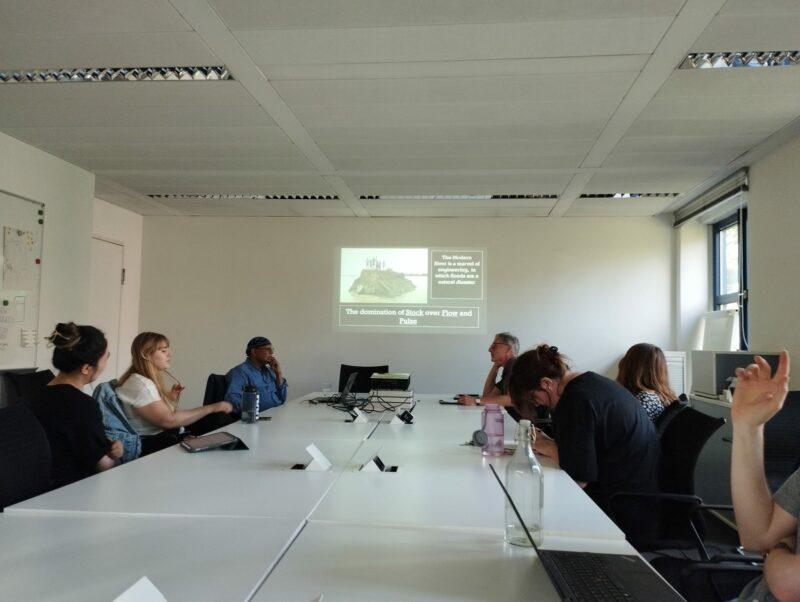
Kirsten Twelbeck
Review – Lecture: Silt, Fish and Engineers: The Great Hydraulic Transition in British India (Dr. Rohan D’Souza)
“What is a river?” With this question Rohan D´Souza introduced the audience to different perspectives on rivers during the 19th century in Europe and South Asia. British engineers regarded rivers in their colonies as a type of stock and a resource to be harnessed. They were perplexed by the lack of perennial irrigation systems in India and often times intrigued by the pre-colonial strategies for managing water in the Sub-continent. Instead, local communities practiced inundation irrigation by building temporary canals and cutting riverbanks during the monsoon season to flood their fields. For them rivers were a pulse and to tap the flood not through science, but as a form of art. The goal of this practice was not to only bring water onto their lands – they wanted silt for fertilization and fish eggs to be swept onto the fields. The spawned fish then ate mosquito larvae and the fish were themselves harvested. This ecological adaptation of half-migratory communities was destroyed in 1793 by the colonial state in favor of a settled agrarian world and monocultures depending on perennial irrigation. Floods were no longer an opportunity to be negotiated, but a hazard to be controlled.
